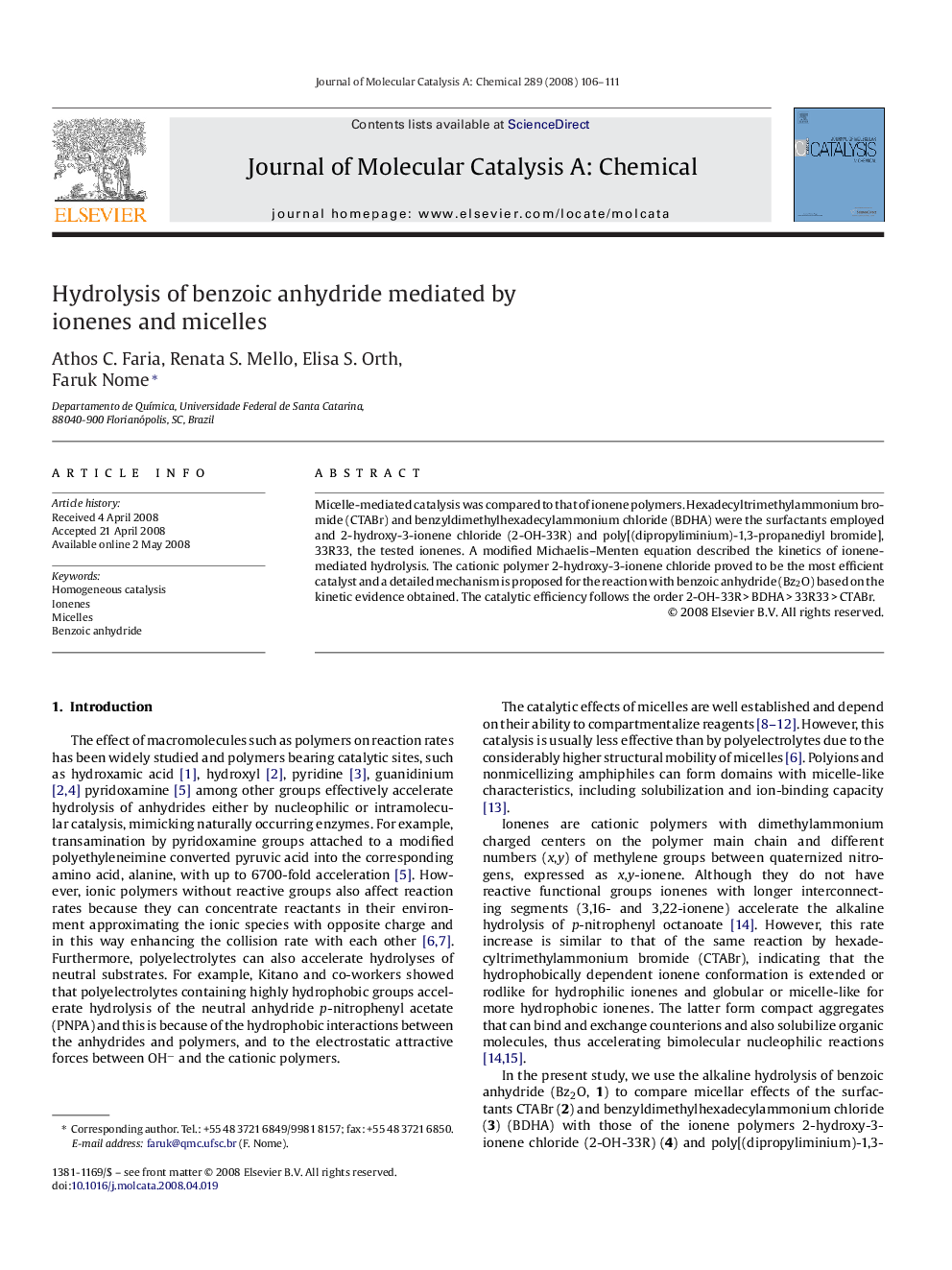| Article ID | Journal | Published Year | Pages | File Type |
|---|---|---|---|---|
| 67565 | Journal of Molecular Catalysis A: Chemical | 2008 | 6 Pages |
Micelle-mediated catalysis was compared to that of ionene polymers. Hexadecyltrimethylammonium bromide (CTABr) and benzyldimethylhexadecylammonium chloride (BDHA) were the surfactants employed and 2-hydroxy-3-ionene chloride (2-OH-33R) and poly[(dipropyliminium)-1,3-propanediyl bromide], 33R33, the tested ionenes. A modified Michaelis–Menten equation described the kinetics of ionene-mediated hydrolysis. The cationic polymer 2-hydroxy-3-ionene chloride proved to be the most efficient catalyst and a detailed mechanism is proposed for the reaction with benzoic anhydride (Bz2O) based on the kinetic evidence obtained. The catalytic efficiency follows the order 2-OH-33R > BDHA > 33R33 > CTABr.
Graphical abstractMicellar catalysis of the hydrolysis of benzoic anhydride by hexadecyltrimethylammonium bromide (CTABr) and benzyldimethylhexadecylammonium chloride (BDHA) was compared with the ionene polymers, 2-hydroxy-3-ionene chloride (2-OH-33R) and poly[(dipropyliminium)-1,3-propanediyl bromide], 33R33. The ionene 2-OH-33R proved to be the most efficient catalyst and the catalytic efficiency follows the order 2-OH–33R > BDHA>33R33 > CTABr.Figure optionsDownload full-size imageDownload as PowerPoint slide
